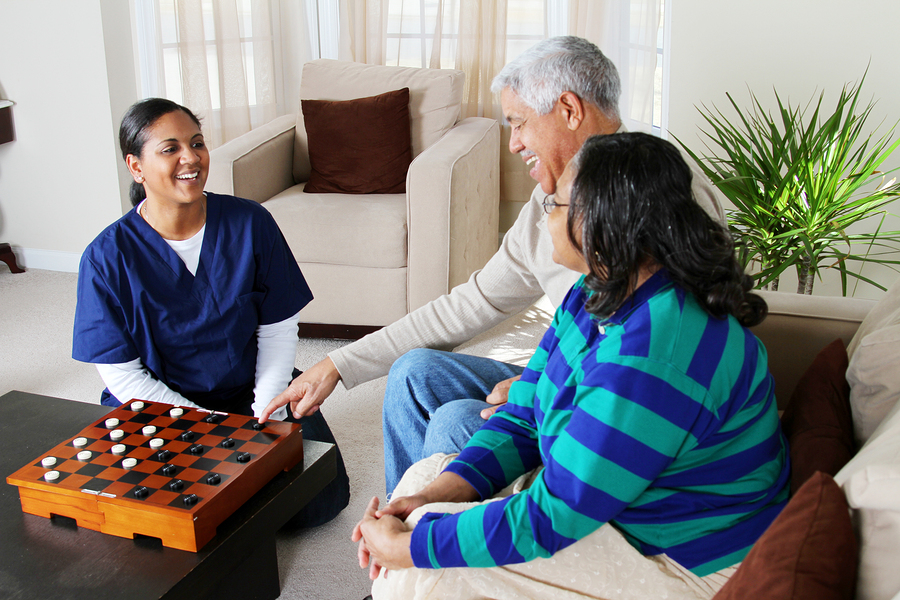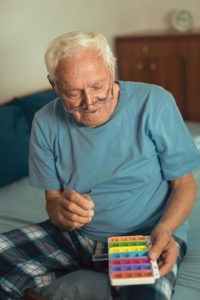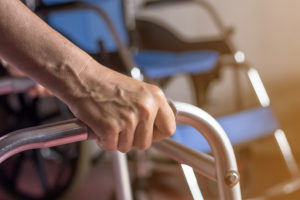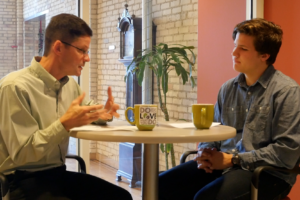OASIS Documentation in Home Health Physical Therapy Assessments
For every rehabilitation setting, documentation can be a source of frustration. Recently, I experienced growing pains while learning the Outcome and Assessment Information Set (OASIS) tool for home care. I thought it would be helpful to share what I learned, in order to ease some of your frustrations with OASIS.
My first training was watching Fazzi videos and a guided OASIS of an imaginary patient in the test mode of the ERM. Initially, I was trying to make sense of the OASIS from a physical therapy evaluation perspective. I became frustrated with how to answer the OASIS questions regarding transfers, toileting, bathing, ambulation, grooming and medications. I owe a huge thank you to the auditors and trainers that patiently corrected my responses to OASIS questions over the past year. Through many instructional conversations, I realized the following:
- The OASIS differs from a standard physical therapy evaluation in HOW functional activities are assessed
- OASIS utilizes DIFFERENT DEFINITIONS of key performance indicators.
First, OASIS differs in how functional activities are assessed compared to standard OT, PT and SLP evaluations. The OASIS considers transfers, medication management, and bathing in a holistic manner. In rehabilitation settings such as sub-acute and acute care, functional tasks are assessed in isolation. For example, patient “Bill” who suffered a CVA, may demonstrate independence in Occupational Therapy setting up his pill box for the entire week. In Physical Therapy, Bill requires stand-by-assist for ambulation due to balance deficits. In the rehabilitation setting, Bill can be considered independent with medication management and stand-by-assist with ambulation at the same time. However, according to the OASIS, part of medication management is accessing medication.
Bill stores his medication in the kitchen and requires him to ambulate to the kitchen to access his medications. Therefore, according to OASIS guideline, Bill would be assessed as minimal assist for medication management.
Second, assessment terminology differs between the OASIS and Physical Therapy evaluation. The OASIS defines “minimal assist” as supervision, stand-by-assist, or verbal cues. This deviates from minimal physical therapy assist defined in physical therapy school as the therapist providing less than 25% of the physical assist required for ambulation, transfer or stair performance. In summary, it is vital to set aside your physical therapy definitions and follow the definitions and guidelines set by the OASIS.
Here are some tips for correctly answering OASIS questions M1850 Transferring, M1839 Bathing, and M1860 Ambulation.
OASIS question 1850:
M1850 Transferring: Current ability to move safely from bed to chair, or ability to turn and position self in bed if patient is bedfast.
- Response 0: Able to independently transfer.
- Response 1: Able to transfer with minimal human assistance or with use of an assistive device.
- Response 2: Able to bear weight and pivot during the transfer process but unable to transfer self.
- Response 3: Unable to transfer self and is unable to bear weight or pivot when transferred by another person.
- Response 4: Bedfast, unable to transfer but is able to turn and position self in bed.
- Response 5: Bedfast, unable to transfer and is unable to turn and position self.
The question defines the transfer as from bed to chair. I observed the patient move from recliner chair to kitchen chair. However, the CMS guidelines state transfer from the bed to the nearest chair. As the APTA states: For this item, a “transfer” is defined as the ability to move between the bed and the nearest sitting surface. In the home setting, the nearest sitting surface is frequently several feet away from the bed, possibly in another room. When ambulation is required, the assistance required for safe ambulation, and the need for an assistive device, must be considered for an accurate response*.
Therefore, the OASIS question includes the possibility of ambulation being a factor when grading the appropriate response. This runs counter to all Physical Therapy conventional assessment of transfers!
Here are additional tips for transfer responses 0-2.
- Response 0: The patient can independently transfer. Patient does not require verbal cues, supervision, or assistive device.
- Response 1: The patient can transfer safely with minimal human assistance OR patient can transfer with the use of an assistive device (In order for assistance to be considered minimal, it would mean that the individual assisting the patient is contributing less than 25% of the total effort required to perform the transfer.)
- Response 2: The patient requires BOTH human assistance and an assistive device to perform the transfer correctly.
The second question I want to review is M1830 Bathing: Current ability to wash entire body safely. Excludes grooming (washing face and hands and shampooing hair only).
The OASIS considers mobilizing to the bathroom as part of the ability to perform bathing. Bathing, then, potentially includes the ability to access the bathroom. For example, if the only shower is upstairs then stair performance is factored into appropriate response. Bathing potentially may also include the use of assistive devices such as grab bars and shower chair. If patient does not currently have the device, the appropriate response only considers how the patient functions with current assistive devices. For example, if the patient displays decreased endurance they may require a shower chair; correct score would be one that does not reflect the shower chair.
- Response 0: Able to bathe self in shower or tub independently, including getting in and out of tub/shower. Tip: Patient must be able to display independent mobility (may include stair performance, narrow doorways, etc.) to the shower and perform shower transfer independently.
- Response 1: With the use of devices, is able to bathe self in shower or tub independently, including getting in and out of tub/shower. Tip: For this response the assistive device must be present.
- Response 2: Able to bathe in shower or tub with the intermittent assistance of another person: (a) for intermittent supervision or encouragement or reminders, OR (b) to get in and out of the shower or tub, OR (c) for washing difficult to reach areas.
- Response 3: Able to participate in bathing self in shower or tub, but requires presence of another person throughout the bath for assistance or supervision.
- Response 4: Unable to use the shower or tub, but able to bathe self independently with or without the use of devices at the sink, in chair, or on commode.
- Response 5: Unable to use the shower or tub, but able to participate in bathing self in bed, at the sink, in bedside chair, or on commode, with the assistance or supervision of another person.
- Response 6: Unable to participate effectively in bathing and is bathed totally by another person.
The last question is ambulation M1860 Ambulation/Locomotion: Current ability to walk safely, once in a standing position, or use a wheelchair, once in a seated position, on a variety of surfaces. The key to this question is to remember that ambulation does not just include even surfaces. OASIS requires the patient to be independent on stairs as well as uneven surfaces to be considered eligible for Response 0 or 1.
- Response 0: Able to independently walk on even and uneven surfaces and negotiate stairs with or without railings (specifically: needs no human assistance or assistive device).
- Response 1: With the use of a one-handed device (for example, cane, single crutch, hemi-walker), able to independently walk on even and uneven surfaces and negotiate stairs with or without railings. Tip: Patient must have the cane, crutch, hemi-walker present for Response 1.
- Response 2: Requires use of a two-handed device (for example, walker or crutches) to walk alone on a level surface and/or requires human supervision or assistance to negotiate stairs or steps or uneven surfaces. Tip: Patient must have the standard walker, front wheeled walker, 4 wheeled walker present for this response.
- Response 3: Able to walk only with the supervision or assistance of another person at all times.
- Response 4: Chairfast, unable to ambulate but is able to wheel self independently.
- Response 5: Chairfast, unable to ambulate and is unable to wheel self.
- Response 6: Bedfast, unable to ambulate or be up in a chair.






